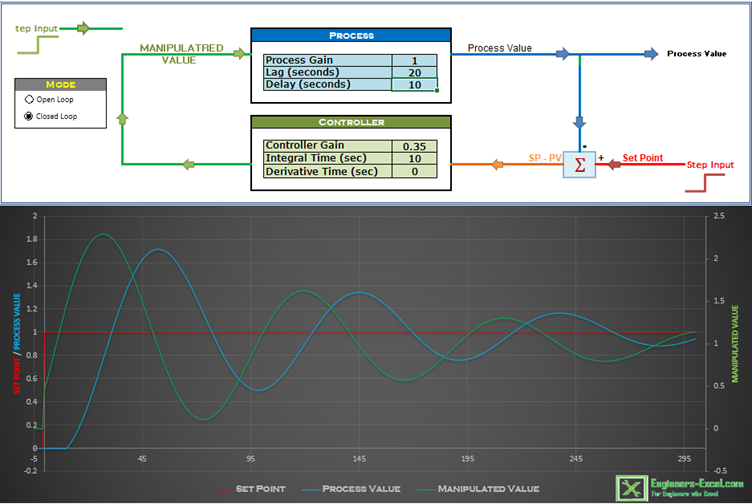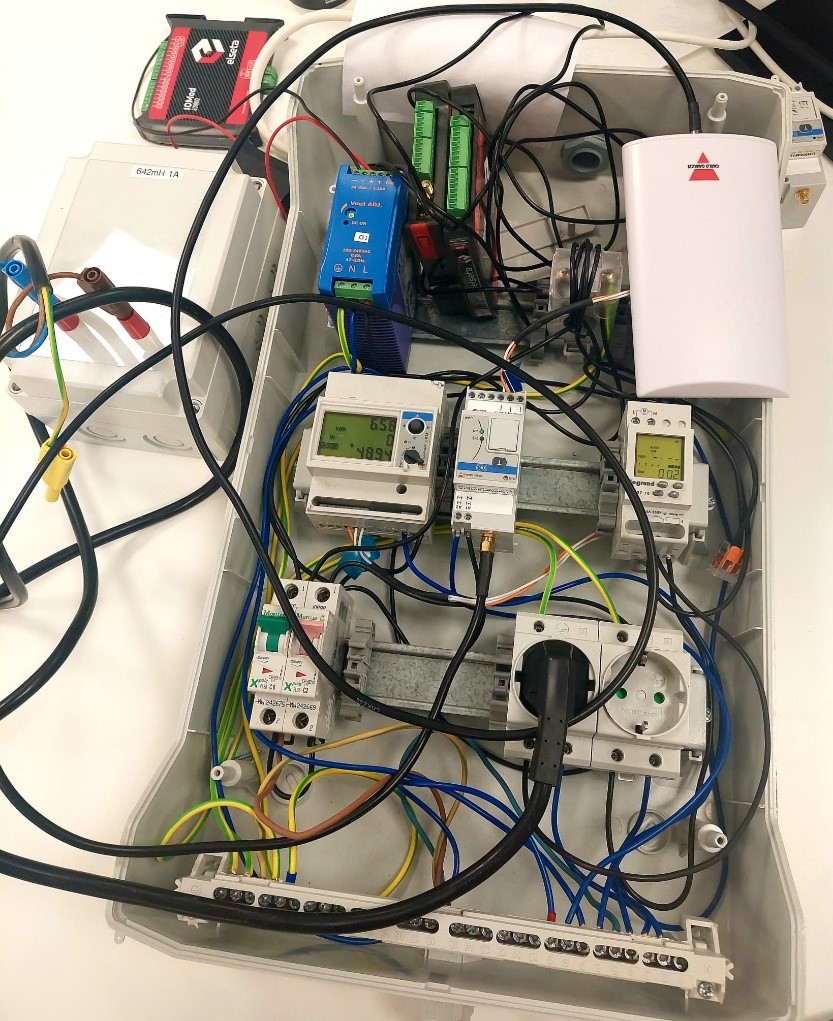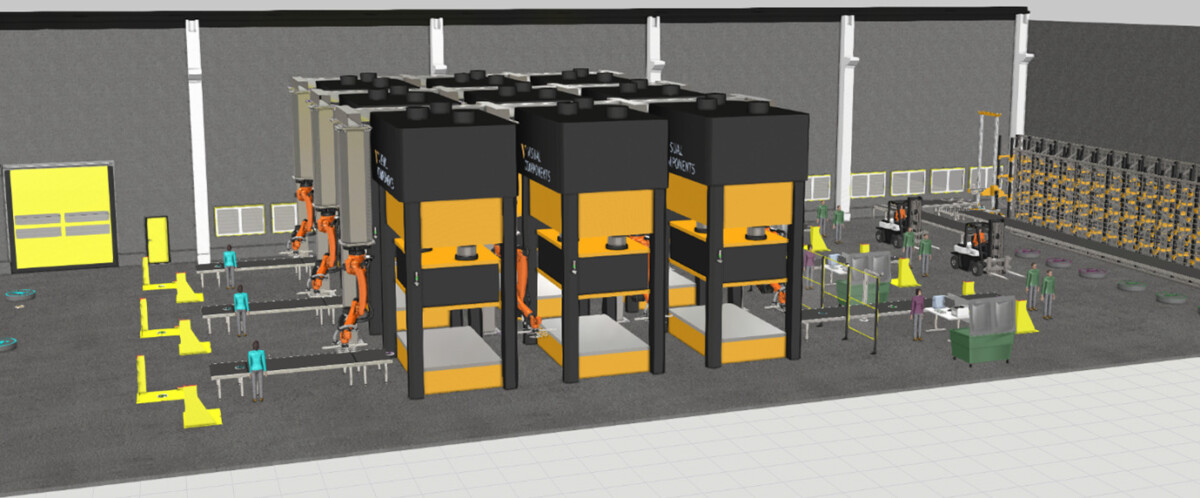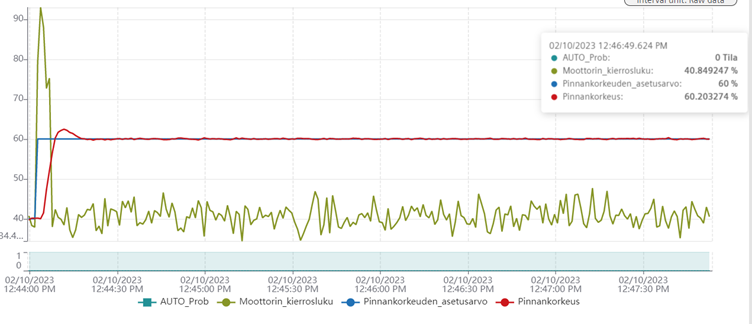
Savonia Article: Data-Driven Manufacturing for Smart Factory
#SavoniaUAS
Introduction:
Data-Driven Manufacturing is one of the learning modules Savonia University of Applied Sciences is responsible for developing in the Virtual Learning Environment for Smart Factory (VLEFACT) project funded by Erasmus Plus. In this module, we have piloted four use cases. These four use cases have been discussed in this article. About 30 students from four educational institutions gathered in Carl-Benz-Schule, Gaggenau, Germany, to participate in the testing of these use cases. The other three institutions are Savonia University of Applied Sciences, Yläsavon Vocational School, Iisalmi, and Mercantec Vocational School, Denmark.
Use Case- 1: Energy Measurement with Elseta Equipment
Elseta’s technology is based on smart metering and analytics, allowing customers to monitor and manage their energy usage in real time. The Elseta system is designed to be easy to install and use, and it can be customized to meet the specific needs of different industries and applications. In addition to its energy metering and management systems, Elseta also provides a range of software solutions for data management and analytics, helping customers to gain insights into their energy usage and optimize their operations.
Our group’s project involves deploying Elseta’s energy metering system in a smart factory setting. By measuring electrical energy consumption in real-time, we can identify areas where energy usage is high and optimize the factory’s energy consumption. This will help reduce costs and improve energy efficiency in the manufacturing process. Furthermore, the data collected can be used to identify patterns and trends in energy usage, allowing us to develop predictive models for energy consumption and optimize energy usage even further.
The use of data-driven manufacturing and energy management technologies like Elseta is becoming significantly important in the context of Industry 4.0, where there is a growing need for real-time data and insights to optimize production processes and reduce energy usage. As manufacturing becomes more automated and digitized, there is a widening need for smart energy management systems to help companies optimize their operations and reduce their environmental footprint.
Overall, our project with Elseta is a vital step toward achieving more sustainable and efficient manufacturing processes. By leveraging the power of data-driven manufacturing and energy management, we can reduce costs, improve efficiency, and minimize our environmental impact. We are excited to continue working with Elseta and exploring their technology’s many possibilities for smart factory applications.
Use Case -2 Electrical Energy Measurement and Data Analysis with Carlo Gavazz
This module utilizes the importance of measuring and saving electrical energy as part of Industry 4.0 principles. The Carlo Gavazzi EM24 is an energy analyzer used for this purpose. The module tested the steps required to measure energy using the Carlo Gavazzi EM24 and UWPA gateway. Data was transmitted from the gateway through Digitas’ LoRaWAN network to IoT platforms. This module used two distinct IoT platforms, Azure IoT Central and ThingsBoard.
The first step in the process was to connect the Carlo Gavazzi EM24 energy meter to the LoRaWAN gateway using a provided cable. To establish the ThingsBoard connection, a ThingsBoard Cloud account was set up, and the free one-month trial of the ThingsBoard Cloud Maker subscription was utilized during the development of this module.
Following the development of the uplink converter code, the next step was to generate a dashboard. ThingsBoard dashboards serve to represent the telemetry data visually. An Azure account and subscription were required to establish the Azure connection.
The process of generating a custom dashboard for the Carlo Gavazzi meter was carried out via the Dashboards section of the application. The primary dashboard for this module was developed to display various metrics, such as voltage and amperage, over time via a line chart. Additionally, the dashboard presents all other measurement variables in a visually understandable manner.
One of the primary objectives of this module was to investigate the potential applications of the Digita LoRaWAN network for energy and electricity measurements. Currently, there is a growing demand from consumers and operators for detailed, real-time information about electricity consumption. Our module successfully achieved this goal by establishing IoT systems that are more manageable than traditional systems with more frequent data flow and remote monitoring facilities.

Use Case- 3 Production Efficiency and Resources Optimization using Visual Components
Visual Components is a 3D manufacturing simulation software used by over 2000 organizations for industry applications such as layout planning and production simulation. Visual Components offer a huge e-Catalog, with tens of thousands of different assets from real-life companies used in a factory model, making it a compelling and practical software. In addition to running simulations, Visual Components can record real-time statistics during a simulation.
The project we developed using Visual Components was based on implementing the LEAN principles of manufacturing, ensuring the desired manufacturing efficiency. We created two factory models of a simple pressing line factory to illustrate how the LEAN manufacturing principles were applied and to check which layout was more efficient.
Both models had three major stages. In the first stage, the plates are moved from the shelves to the conveyor, undergoing a three-stage compression process. Lastly, the plates have a quality check, following which they are moved off the conveyor and to the warehouse. In the first model, we had humans working in the initial manufacturing process and the KUKA robots working in the latter stage. In the second model, we had the KUKA robots working in the initial and the latter stage of the process, and the humans worked solely on the quality control of the pressed objects. The second model proved more efficient as the LEAN principles were fully applied, and there was little waste in the manufacturing process.
In conclusion, using Visual Components software for manufacturing simulation and optimization proved to be highly effective in this project. We determined which design was more efficient by applying the LEAN principles of manufacturing and developing two factory models with different layouts. The real-time statistics provided by Visual Components allowed for an accurate evaluation of the efficiency of each model. Our project exemplifies how Visual Components can be used to solve efficiency and optimization problems in real-life industries.

Use Case- 4 Siemens Mindsphere and PID controller for Water Process
Nowadays using digital services has become essential for firms and businesses to adapt to changing market conditions whereby staying competitive. Novel technologies like cloud computing, artificial intelligence, digitalization, and the Internet of Things with the number of benefits they can provide, becoming game changers across various industries. One such digital service is Siemens Mindsphere – a cloud-based system able to connect the digital world and physical infrastructure for its users. It provides businesses with tools to collect and analyze real-time data on production processes, giving an opportunity to optimize processes and identify issues in the early stages.
For illustrating Mindsphere’s capabilities, a study simulating factory’s water supply process has been conducted. The process consisted of a water tank with constant inflow and outflow of water, powered with necessary equipment such as us electric motor, level, and pressure sensors, a system of pipes and valves, and others. During the first stage of the project data obtaining and transferring capabilities were studied. The Mindsphere provides the user with data almost in real-time. Within several minutes it was ready to extract and analyze. Moreover, storing and observing the data from previous periods is also possible, providing opportunities for further analysis within the enterprise and the ability to react rapidly to any violations in the production process.
The purpose of the second stage was to use the data from Mindsphere to create a digital twin of the PID controller – a feedback control element widely used in engineering and automation which was also used to control the water process. At first, the step response action of the process was caused. Then, using graphical data from Mindsphere, the process gain and time constant were founded. Next the appropriate P, I, and D values of the controller were founded using the Ziegler-Nichols tuning method. And finally, the MATLAB Simulink model of the process with PID controller was created. By using the model and P, I, and D values calculated in the previous step it was possible to simulate the parent process and eventually get similar behavior.
In conclusion, Mindsphere represents a powerful tool for data analysis, providing businesses with information that can be used to create digital models with such software as Matlab Simulink, analyze them, test and adjust them based on previously obtained real data, which in turn allows to check all the possibilities before implementation, eliminate errors and save resources, money, and time..

Authors, Email, and Affiliation:
Md.Sajib M Pramanic Md.Sajib.Pramanic@edu.savonia.fi, IoT student, Savonia UAS
Bishwatma Khanal Bishwatma.Khanal@edu.savonia.fi, IoT student, Savonia UAS
Md. Z Khan Md.Khan@edu.savonia.fi, IoT student, Savonia UAS
Stanislav Kolosov Stanislav.Kolosov@edu.savonia.fi, IoT student, Savonia UAS
Shahil Sharma Shahil.Sharma@edu.savonia.fi, IoT student, Savonia UAS
Suubi Lubaale Suubi.Lubaale@edu.savonia.fi, IoT student, Savonia UAS
Asmita Thapa Magar Asmita.ThapaMagar@edu.savonia.fi, IoT student, Savonia UAS
Tahsina F Tasmi Tahsina.Tasmi@edu.savonia.fi, IoT student, Savonia UAS
Pasi Lepistö Pasi.Lepisto@savonia.fi, Senior Lecturer, Savonia UAS
Arto Toppinen Arto.Toppinen@savonia.fi, Principal Lecturer, Savonia UAS
Rajeev Kanth Rajeev.kanth@savonia.fi, Senior Lecturer, Savonia UAS